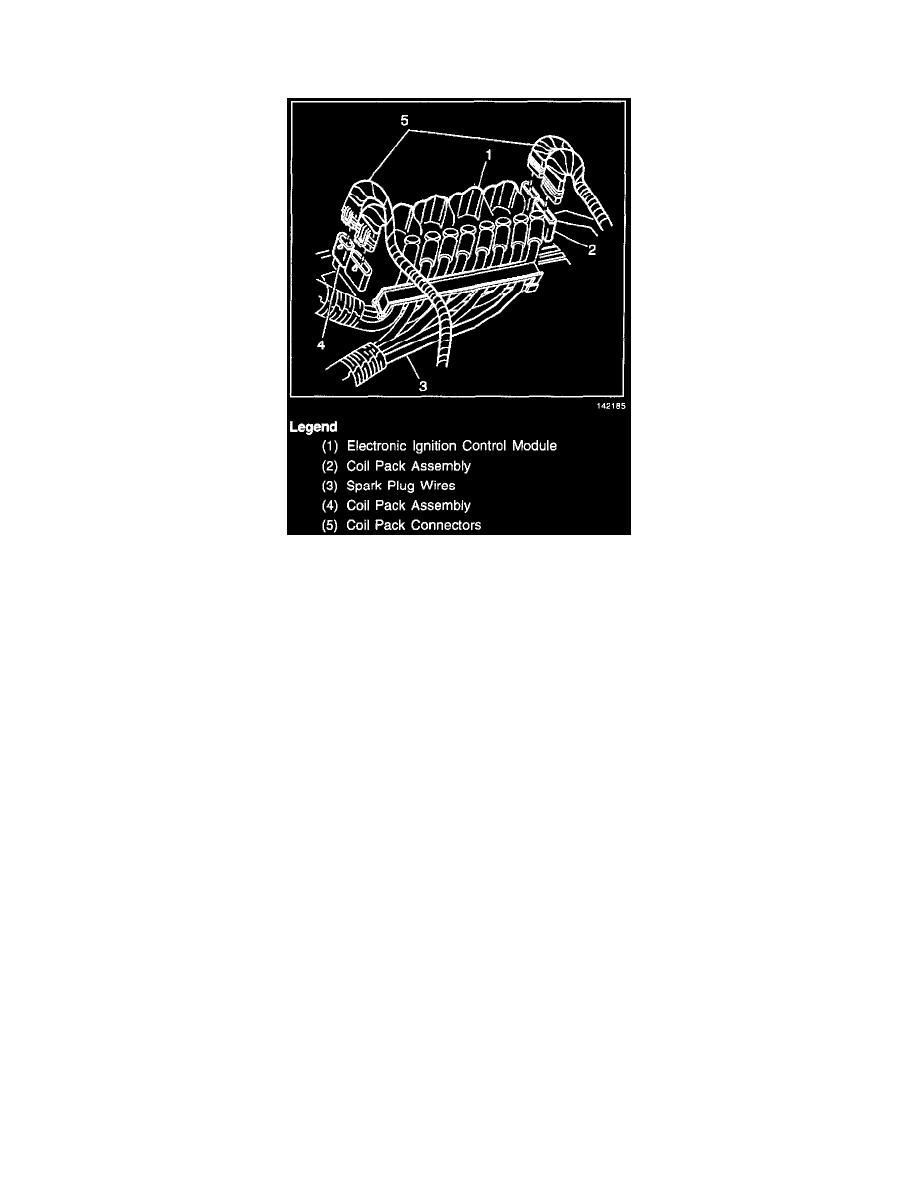DeVille V8-4.6L VIN Y (1998)

Ignition Control Module: Description and Operation
Ignition Control Module (ICM)
Description
DESCRIPTION
The ICM provides the PCM with engine speed (4X REF HI), fuel control (i/2X CAM HI), ignition control (Bypass and Ignition Control) and ground
reference (REF LO/CAM LO) information. The ICM also provides the PCM with a signal to indicate if the ICM has identified a problem with one of its
three sensors (24X Crank). All of these signals are varying voltages that have a maximum of 5 volts. The Ignition Control (IC) module is located on top
of the rear camshaft cover.
OPERATION
The IC module performs several functions:
^
It monitors the On-Off pulses produced by the two crankshaft and one camshaft position sensors.
^
It creates a 4X and 24X reference signal (4X REF HI and 24X Crank) sent to the PCM for ignition control.
^
It creates a camshaft reference signal (CAM HI) sent to the PCM for fuel injection control.
^
It provides a ground reference (REF LO, CAM LO) to the PCM.
^
It provides a means for the PCM to control spark advance (BYPASS and IGNITION CONTROL) called IGNITION CONTROL MODE.
^
It provides a limited means of controlling spark advance without PCM input called MODULE MODE.
^
The IC module is not repairable. When a module is replaced the remaining components must be transferred to the new module.
The PCM uses ICM information for fuel control, idle speed control and ignition control (which it outputs back to the ICM). A fault with any of these
signals between the ICM and PCM will cause various driveability conditions and should set a DTC.
